The West Coast
The West Coast District Health Board (DHB) serves 32,000 people. The region is 600km long (that's about the same as from Auckland to Wellington) and it takes 7 ½ hours to drive from top to bottom.
What's the region like?
Some 84 per cent of the land is national park or conservation reserve containing such diverse features as palm beaches, glacial landscapes, wild river gorges and thermal areas. It is also the sole source of precious pounamu jade, prized by generations of Māori.
Read more about the West Coast District Health Board
One of New Zealand's most beautiful, sparsely populated regions, the West Coast is known to Māori as Tai Poutini.
Working and living on 'the Coast' offers a unique lifestyle. The spectacular native forests, mountain rivers, lakes and sea coast offer outstanding recreational opportunities such as fishing, skiing, tramping, kayaking and mountain biking.
Many West Coasters are engaged in primary industries such as mining, timber production and farming, while the magnificent environment offers many outdoor recreational activities for locals and thousands of international tourists.
The academic year
Overview
Learning is centred at Te Nikau Hospital. This facility is a secondary referral centre that provides a full range of services (except for Intensive Care) with approximately 100 beds. Tertiary services are provided on an outpatient basis by visiting consultants.
There is a large General Practice component during the year, with placements in Te Nikau's Integrated Family Health Centre as well as local private practice. There are also placements in Westport throughout the year.
We encourage immersion in the health care system as much as possible, with self-directed and spontaneous learning experiences arising from the patients that present, and the relationships that students form with the multidisciplinary team. Accompanying the patient through their journey is seen as a key element to learning in Greymouth.
So, for example, you may learn all about ectopic pregnancy by clerking the patient in General Practice, then follow them to A&E, through their investigation, up to the theatre, and then to the ward. You may consolidate this learning experience by presenting the case to any of the doctors that have been involved in this patient's journey, and getting them to ask you questions afterwards.
There are several set attachments during each term that provide a focus for learning. However, students are to move outside these areas to pick up clinics or follow patients. Weekly meetings with local RMIP staff on Wednesday help plan the following week, depending on learning needs you have identified. It is then the responsibility of the RMIP administrator to communicate your weekly timetable to the rest of the hospital staff. Arranging your own teaching sessions directly with staff is also encouraged.
Aim to clerk and present one patient a day, check in with the RMOs and visit wards daily when not on attachment. Clinics are also a good place to learn. Everyone is able to teach you. Make sure you make the most of the ward pharmacist, physiotherapy, specialist nurses, etc. Ask them for their input about your patients. If you have a special interest in an area, then you will be able to spend time on this (for example: practicing stitching at minor operations clinics).
As a general rule eight sessions a week will be in a clinical setting, allowing two sessions for personal and group study. In term four this is reduced to around five sessions a week to allow for revision.
You will be kept abreast of RMO teaching sessions and encouraged to join these as you can. Indeed the RMOs are a wonderful resource to the RMIP students as well, happy to support OSCE practice and take teaching sessions as well.
Clinics and colleagues
One big advantage with Grey Base Hospital is its size – big enough to offer most services, but small enough that you can build close relationships with staff.
Paediatrics
Good one-on-one / small group teaching with the visiting paediatrician. Students are encouraged to call to discuss cases (can be actively involved in care).
Obstetrics and Gynaecology
Students can work closely with midwives, experience small group teaching with consultants and attend clinics and theatre. They actively attend births and participate in care.
Rural General Practice
Massive range of patients in clinics, doctors are helpful with ad-hoc teaching.
Surgery
Students are encouraged to observe and participate.
Visiting clinics
- Ophthalmology
- Rheumatology
- ENT
- Nephrology
- Neurology
- Orthopaedics
- Musculoskeletal
- Plastics, etc.
Staff
Key staff for the RMIP students are:
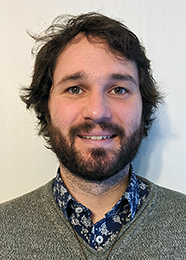 Dr Matthew Bell
Dr Matthew Bell
Regional Co-ordinator for Westland Rural Medical Immersion Programme
Email matthew.bell@wcdhb.health.nz
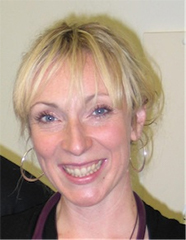 Dr Emma Boddington
Dr Emma Boddington
Director Student Liaison and Affairs, Regional Co-ordinator West Coast Rural Medical Immersion Programme
Email emma.boddington@otago.ac.nz
Tanya Nicholls-Dillon
RMIP administrator West Coast
Facilities
RMIP students are based in the Rural Learning Centre (RLC) which occupies two 'flats' in a three-flat block. The end unit houses the RLC offices, and the Teaching Room. The middle flat contains the RMIP Study Room. The RMIP study is exclusively available to the RMIP students and has desks, a networked computers, whiteboard and resource library. There is also a galley kitchen and shower in the flat.
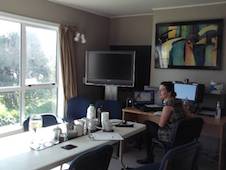
RMIP
student at the Rural Learning Centre
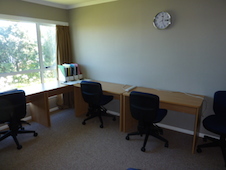
Rural Learning Centre
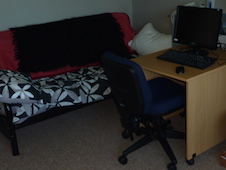
Rural Learning Centre
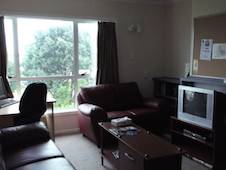
Rural Learning Centre lounge
Recreation
You will have the opportunity to experience many aspects of the community that you wouldn't have the chance to elsewhere. However you are reminded not to wear white when going milking, and gumboots are recommended footwear at that time!
Other activities include:
- Skiing
- Hiking
- Tramping
- Horse riding
- Fishing
- Hunting
- Surfing
- Wild Foods festival
- Motorcycle street racing
Despite the dismal weather predictions, nothing beats the Coast on a good day, and it has surprisingly more good days than you've been led to believe. With milder temperatures than Dunedin or Christchurch, the Coast enjoys a more moderate climate without the biting cold of winter or searing heat of summer you might be used to.
Friendly people who are not going to ask where you come from or what school you went to, but instead are more likely to want to know if you're related to the Smiths of Hari Hari, will welcome you into the community and encourage you to join in.
You will get out of the Coast what you put in.
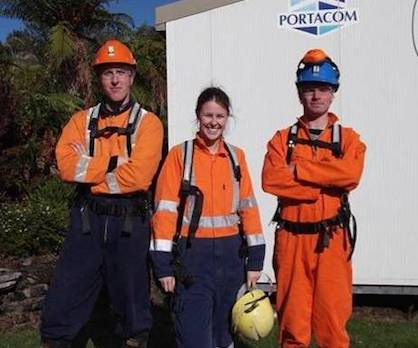
RMIP students at mines rescue
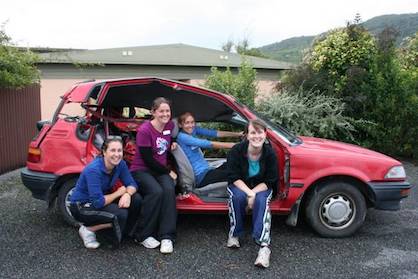
RMIP students with accident response demonstration car
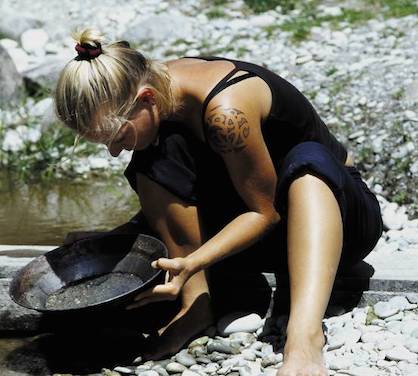
RMIP student panning for gold